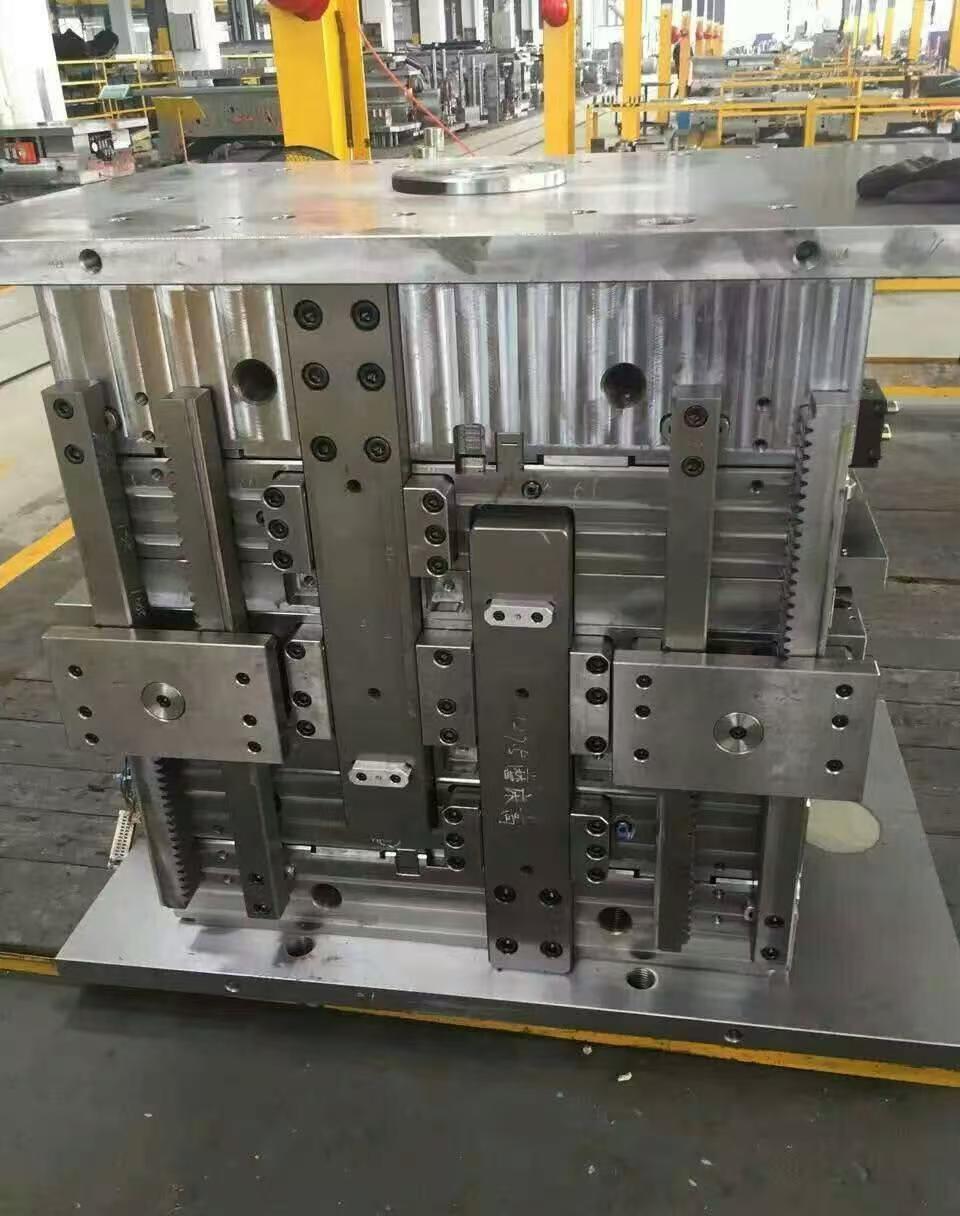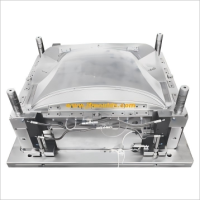Las causas y soluciones de rayas de plata, decoloración, ondas de superficie y rugosidad en productos moldeados por inyección
Las causas y soluciones de rayas de plata, decoloración, ondas de superficie y rugosidad eninyección moldeadaproductos
Defecto del producto | Razones posibles | Solución | |
| Patrón de plata en el producto | 1. Compuesto de plástico iluminado o pellets de plástico desiguales, adulteración o proporción inadecuada. 2. El plástico contiene una gran cantidad de humedad y tiene sustancias volátiles bajas mezcladas. 3. Una pequeña cantidad de aire se mezcla con el plástico. 4. El adhesivo fundido no fluye continuamente en la cavidad del moho. 5. Hay humedad, aceite lubricante o uso excesivo o inadecuado del agente de liberación de moho en la superficie del molde. 6. Cuando el molde tiene un escape deficiente y el material fundido de paredes delgadas fluye hacia la de paredes gruesas, se expande y las sustancias volátiles se vaporizan y licúan al contacto con la superficie del molde para formar filamentos de plata. 7. La temperatura del molde es baja, la presión de inyección es pequeña, la velocidad de inyección es lenta, el relleno de material fundido es lento y el enfriamiento es rápido, formando una capa delgada de luz reflectante blanca o blanca plateada. 8. El tiempo de inyección de pegamento se establece demasiado corto. 9. El tiempo de retención de presión se establece demasiado corto 10. La temperatura plástica es demasiado alta o la presión posterior es demasiado alta. 11. Hay obstáculos o rebabas que afectan el barril o la boquilla. | 1. Controle firmemente la fórmula de proporción de plástico. Los materiales mixtos deben ser uniformes en grosor para garantizar la plastificación. 2. Secia el plástico antes de la producción para evitar la contaminación. 3. Reduzca la temperatura en el extremo trasero del cilindro de masa fundida o aumente la temperatura en el extremo frontal del cilindro de fusión. 4. Al ajustar las puertas, asegúrese de que sean simétricas. Determine la posición de la puerta o mantenga la temperatura del molde uniforme. 5. Limpie las manchas de humedad o aceite en la superficie del molde y use el agente de liberación del molde razonablemente. 6. Mejore el diseño del molde, controle estrictamente la proporción y la fórmula de las materias primas plásticas tanto como sea posible, y reduce la contaminación de las materias primas. 7. Aumente la temperatura del molde, eleve la presión y la velocidad de inyección, y extienda el tiempo de enfriamiento y el tiempo del ciclo de moldeo por inyección. 9. Aumente los valores de configuración del parámetro para el tiempo de inyección y los valores de configuración del parámetro para el tiempo de presión de retención. 10. Comenzando desde la boquilla, reduzca la temperatura del cilindro de fusión o baje la velocidad del tornillo para disminuir la presión posterior del tornillo. 11. Check the barrel and nozzle. The gating system is too rough and should be improved and enhanced | |
| The product has changed color. | 1.Impurities are mixed into plastic and pigments. 2. Plastic and pigment pollution or degradation, decomposition. 3. The quality of the pigment is poor or it is not stirred evenly during use. 4. The temperature of the barrel and the nozzle is too high, causing the rubber compound to burn and change color. 5. The injection pressure and speed were set too high, causing the additives and colorants to decompose. 6. There is moisture, oil stains on the surface of the mold, or mold release agents have been used .. 7. The distribution of fiber fillers is uneven. When the product comes into contact with the solvent, the resin dissolves, leaving the fibers exposed. 8. Obstacles in the glue melt cylinder promote the degradation of materials. | 1.When mixing materials, avoid mixing in any impurities. 2. The raw materials should be dry and the equipment clean. When changing materials, they should be thoroughly cleaned to avoid leaving any excess materials. 3. Ensure the quality of the pigments used. When stirring, the pigments should be evenly adhered to the surface of the material particles. 4. Lower the temperature of the glue cylinder and the nozzle to remove the charred glue. 5. Reduce the injection pressure and speed parameter values to prevent the decomposition of additives. 6. Dry the moisture and oil stains on the surface of the mold and use the mold release agent reasonably. 7. Set the process parameters of fiber fillers reasonably and use solvents properly to ensure good plasticization and eliminate fiber exposure. 8. Pay attention to eliminating obstacles, especially when changing materials, strictly follow the step-by-step procedures or use the transitional material change method. | |
| Corrugations on the surface of the product | 1.The small gate causes the rubber compound to spray inside the mold cavity. 2. The flow channel is tortuous, narrow, with poor smoothness and insufficient supply of rubber compound. 3. The cut surfaces of the products are uneven in thickness, large in area and complex in shape. 4. Improper mold cooling system or low mold temperature. 5. Low material temperature, low mold temperature or low nozzle temperature. 6. The injection pressure and speed Settings are too low. | 1.Modify the gate size or reduce the injection pressure. 2. Modify the flow channel and enhance its smoothness to ensure sufficient supply of the rubber compound. 3. Design the product to ensure uniform thickness of the cut surface, or remove the protruding discs and raised lines on the product. 4. Adjust the cooling system or add molds. 5. Increase the temperature of the glue melt cylinder and the nozzle. 6. Increase the set values of the injection pressure and speed parameters. | |
| The product is rough | 1.The mold cavity is rough and has poor smoothness. 2. Plastic meat contains excessive moisture or volatile substances, or plastic pigments have decomposed and deteriorated. 3. Insufficient feeding, poor curing or poor fluidity of the plastic. 4. There is moisture and oil stains on the mold wall. 5. Excessive use of mold release agent or improper selection. 6. The molten material in the mold cavity does not fully contact the cavity wall. 7. Slow injection speed and low pressure. 8. The draft Angle is small, resulting in poor draft or low surface hardness of the product, which is prone to scratches and wear. 9. Uneven particle size or the mixture of immiscible materials can cause uneven color, silver streaks, etc. | 1.Polish the mold cavity again. 2. Dry plastic raw materials, use recycled materials reasonably, and prevent impurities from being mixed in. 3. Check the condition of the discharge port and the plasticization of the plastic material, and then adjust the parameters. 4. Clean and repair water leakage cracks or prevent water vapor from condensing on the wall surface, and wipe off oil stains. 5. Select a small amount of mold release agent correctly to clean the mold. 6. It can be improved by increasing the injection pressure, raising the mold temperature and increasing the feed. 7. Increase the injection pressure and speed Settings, raise the melt temperature, and increase the back pressure. 8. Modify the mold slope, select the ejector pin parameters reasonably, and operate carefully. 9. When mixing materials, pay attention to the uniform size of the material particles to prevent other materials from entering by mistake. |
Molde Co.,Ltd. de Taizhou Jiefeng del coche (jfmoulds.com)
Molde Co.,Ltd. de Taizhou Jiefeng de Mould_Taizhou de la materia (jfmoulds.com)

Información relacionada
Diversificación de las empresas de moldes de inyección
2025-06-28
Diversificación de las empresas de moldes de inyección. Moldes automotrices: Conducir Indust...
Molde de inyección comúnmente utilizado seis tipos de materiales de molde
2025-06-19
La elección del acero no solo afecta la vida útil del molde, sino...
Proceso de procesamiento de diseño de fabricación de moldes
2025-06-19
El flujo del proceso de 1. fabricación de moldes es el siguiente: revisión de dibujo-material...
La clave para el moldeo de productos de plástico
2025-07-21
La clave para la moldura de productos de plástico en el deslumbrante mundo de la producción de plástico de hoy ...
Diseño especial de moho
2025-07-24
Diseño especial de molde1 Molde apilado El molde apilado produce simultáneamente inyección ...
Tecnología de puerta de moho de inyección
2025-07-23
Inyection Mold Gate Technologygating Systemauto Mould_taizhou Jiefeng Mold Co., ...





